Creating Your Own NFT: A Comprehensive Guide
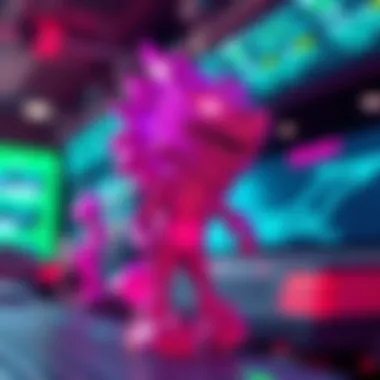
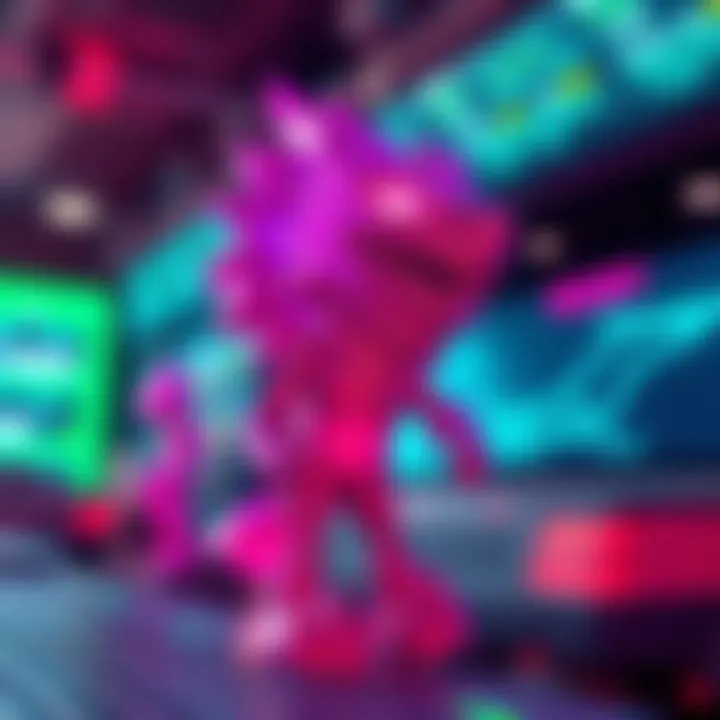
Intro
Non-fungible tokens, or NFTs, have turned heads and sparked conversations across diverse fields. This digital frontier, at first glance, seems almost whimsical, yet beneath that allure lies a formidable blend of technology and creativity. From art and music to virtual real estate, NFTs offer unique opportunities for investors, artists, and innovators. Understanding this realm is crucial for those looking to benefit from it. The aim here is to demystify the process of creating an NFT, covering both foundational concepts and practical steps.
Crypto Concepts Explained
Understanding the core principles of cryptocurrency and blockchain technology is essential before diving into the actual creation of NFTs. These concepts form the bedrock upon which NFTs are built.
Key Terminology and Definitions
Familiarizing oneself with essential terminology in the NFT space can save much confusion down the line. Some key terms include:
- NFT: A non-fungible token that represents ownership of a unique item or piece of content on the blockchain.
- Blockchain: A decentralized digital ledger securing transactions across many computers, ensuring records can't be altered retroactively.
- Smart Contracts: Self-executing contracts where the terms are written into code, automating and verifying actions without intermediary involvement.
- Minting: The process of turning a digital file into an NFT on the blockchain by creating a unique entry that records its existence.
Understanding these terms establishes a foundation that enhances comprehension of the NFT creation process.
Practical Applications of Blockchain Technology
Blockchain technology extends beyond NFTs; its real-world applications highlight its versatility. Consider the following implications of blockchain:
- Supply Chain Management: Transparency in tracking products from origin to consumer, ensuring authenticity.
- Secure Voting Systems: Preventing tampering with votes and ensuring confidentiality, fostering trust in electoral processes.
- Intellectual Property Protection: Storing and verifying creators' rights, reducing piracy and plagiarism.
- Digital Identity Verification: Offering individuals control over personal information while improving security against identity theft.
With such applications, the implications of blockchain stretch far and wide, reshaping customary practices in various industries.''
Investment Strategies
While creating an NFT can be an exciting venture, understanding market dynamics is pivotal for successful investments.
Analyzing Market Trends and Indicators
Primary indicators to watch out for include:
- Market Volume: Observing fluctuations can indicate interest levels within the NFT platforms.
- Sales Trends: Noting what types of NFTs are gaining traction helps in understanding consumer preferences.
- Social Media Sentiment: Going through forums on platforms like Reddit can reveal community buzzing around specific projects or artists.
Risk Management Techniques
Navigating the NFT market carries its risks. Effective strategies comprise:
- Diversification: Spreading investments across various NFT types or artists to minimize potential losses.
- Setting Budgets: Defining a clear budget assists in avoiding overspending in the speculative nature of NFTs.
- Research: Always look for credible sources and expert reviews before engaging in any transactions. Sites like Wikipedia, Britannica, and crypto-focused communities on platforms such as Reddit can provide enlightening insights.
"Investing in NFTs is as much about understanding the culture as it is about analyzing numbers."
By equipping oneself with knowledge around market strategies and risk management, one can navigate the NFT space more effectively.
Getting started with your own NFT isn't merely about creativity; it requires thoughtful consideration of the surrounding landscape. The following sections will dive deeper into the step-by-step process of bringing an NFT to life, ensuring you're well-prepared to make informed decisions along the way.
Understanding Non-Fungible Tokens
The world of digital assets is rapidly changing, and at the crux of this transformation lies the concept of non-fungible tokens, or NFTs. Grasping this concept is pivotal for anyone looking to dive into the world of cryptocurrency and digital ownership. In this section, we will unpack the fundamental aspects of NFTs, exploring their significance and the nuances that make them unique. Understanding what constitutes an NFT, its historical background, and its defining characteristics will set the stage for a deeper exploration of the NFT market and creation process.
Definition of NFTs
Non-fungible tokens are a type of digital asset that represent ownership of a unique item or piece of content on a blockchain. Unlike cryptocurrencies like Bitcoin or Ethereum, which are fungible and can be exchanged one for another without any loss in value, NFTs are distinct and not interchangeable. Each NFT has its own unique identifier that distinguishes it from any other token. This property enables them to provide verifiable ownership of items such as digital art, music, and even virtual real estate.
History and Evolution of NFTs
NFTs emerged from the growing intersection of blockchain technology and digital art, tracing their lineage back to earlier forms of digital collectibles. The term 'non-fungible token' was popularized around 2017 with the rise of CryptoKitties, a game that allowed users to breed and trade virtual cats on the Ethereum blockchain. This game not only highlighted the viability of NFTs but also exposed scalability issues on Ethereum, which can arise when demand surges. Over the years, platforms like OpenSea, Rarible, and Foundation have broadened the NFT landscape, allowing artists and creators from all backgrounds to tokenize their work and reach global audiences. The evolution of NFTs can therefore be viewed as a reflection of the shifting dynamics in how we perceive ownership and value in the digital age.
Characteristics of Non-Fungible Tokens
Uniqueness
The foremost characteristic of non-fungible tokens is their uniqueness. Each NFT carries distinct information that makes it one-of-a-kind on the blockchain. This uniqueness adds value since collectors are often drawn to the idea of owning something that cannot be replicated. For artists and creators, creating unique assets or experiences enhances their potential revenue streams and provides buyers with a sense of exclusivity. However, the challenge lies in determining the value of this uniqueness—what makes one piece more valuable than another is often subjective and influenced by market trends and collector demand.
Ownership
Ownership in the context of NFTs is definitive; when a buyer purchases an NFT, they gain rights over that specific token. This right is recorded on a blockchain, making it incontrovertible and transparent. For collectors, having proven ownership can enhance the perceived value of the asset, leading to a more lucrative resale option in the future. However, it’s important to note that ownership of an NFT doesn’t automatically grant copyright or usage rights, a nuance that can be misleading for those unfamiliar with the ecosystem. Understanding the difference between owning an NFT and owning the rights to the content it represents is crucial for any potential buyer.
Interoperability
Interoperability refers to the ability of NFTs to operate across different blockchain platforms and applications. This characteristic allows users to engage with their NFTs in various environments, enhancing their utility. For example, a digital art piece could be shown in a virtual gallery while also being used as an avatar accessory in a gaming platform. Such adaptability is appealing as it adds layers of functionality to the asset. However, this openness can also lead to complications around standards and compatibility, making it necessary to stay informed about the technicalities behind each blockchain's structure if one hopes to maximize the potential of their NFTs.
"Understanding the core principles of NFTs and their characteristics enables both creators and collectors to make informed decisions in this rapidly evolving landscape."
By delving deeper into the definition, history, and defining characteristics of non-fungible tokens, we lay a solid foundation for the subsequent sections of this guide. It prepares aspiring creators and collectors to navigate the complexities of NFT creation and investment with greater confidence.
Exploring the NFT Ecosystem
Delving into the NFT ecosystem is crucial for anyone interested in creating their own non-fungible tokens. This realm is not merely a collection of marketplaces and assets; it’s a vibrant, interconnected network that influences trends, values, and opportunities. By understanding this ecosystem, creators can maximize their potential within the NFT landscape.
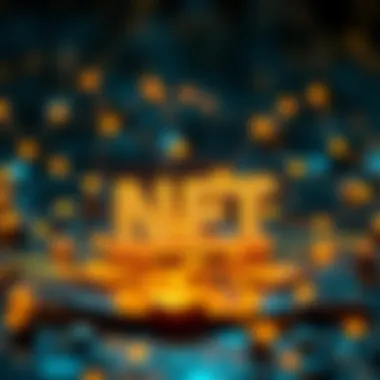
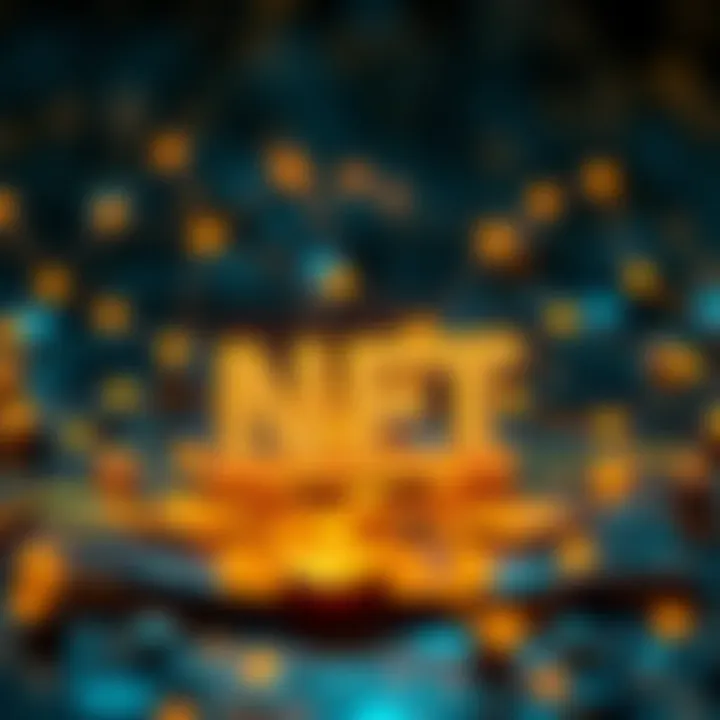
The NFT ecosystem is made up of various marketplaces, types of NFTs, and the platforms used for minting them. Each element plays a vital role in shaping not only individual creations but also the market itself. As the blockchain space is rapidly evolving, staying updated about its components is key to navigating successfully, especially for investors and enthusiasts alike.
NFT Marketplaces Overview
When discussing NFTs, one cannot overlook the marketplaces where these tokens are bought and sold. Each platform has its own unique attributes that cater to different kinds of creators and collectors.
OpenSea
OpenSea stands out as the largest and most versatile NFT marketplace. What makes OpenSea beneficial is its extensive range of digital assets. It allows creators to sell everything from artworks to domain names, making it a go-to place for many who are just starting.
A unique feature of OpenSea is the ability to create and manage collections effortlessly, which can be an appealing choice for those with multiple assets to offer. While its vast reach brings a diverse audience, it's important to note that with so many choices, standing out can sometimes be a challenge.
Rarible
Rarible is another significant player in the NFT game, promoting a community-driven structure that aligns closely with the principles of decentralization. This marketplace allows users not just to buy and sell, but also to create and manage their own NFTs.
The advantage of Rarible is its user-friendly interface, which is designed to make the creation process less daunting for newcomers. However, the overall quality of listings can vary; thus, creators may find that it requires more effort to establish credibility in a sea of options.
Foundation
Foundation serves as a platform emphasizing quality over quantity. It is particularly popular among artists due to its curated approach, meaning that not just anyone can list their work. This selectivity helps maintain a high standard for the content available, which can be reassuring for buyers.
The unique characteristic of Foundation is its community engagement, which often leads to higher sale prices on average. Still, its exclusivity can be a double-edged sword for newer artists who might find it harder to gain entry.
Types of NFTs
Understanding the various types of NFTs can greatly enhance your NFT creation experience. Each category comes with its own attributes, appealing to different segments of the market.
Art
NFT art is perhaps the most recognized segment of the NFT marketplace. Artists can tokenize their work, turning traditional pieces into unique digital assets. This means artists can retain provenance and ownership over their creations like never before.
The uniqueness of art NFTs lies in their ability to connect directly with collectors, bypassing conventional gallery systems. However, this can also lead to oversaturation, where the market is flooded with art, making it difficult for any single piece to gain traction.
Collectibles
NFT collectibles tap into the trend of digital memorabilia. These can range from virtual trading cards to character skins in games. The potential for community building around specific collectibles can vastly increase their value, often making them sought-after by fans and collectors.
However, the collectible market can be fickle. Trends come and go, so jumping on a bandwagon at the right time may be essential for financial success.
In-Game Assets
In-game assets are NFTs designed to enhance player experiences in the gaming world. These tokens allow players to own items, characters, and skins, which can be traded or sold for real-world currency. What sets this type of NFT apart is its intrinsic utility within particular games, engaging players in new ways.
Still, the downside is their dependence on the longevity of the game’s popularity. If the game falls out of favor, the value of its associated NFTs can plummet.
Platforms for Minting NFTs
Lastly, understanding the platforms for minting NFTs adds yet another layer of depth to your journey. Each platform boasts its own advantages and challenges.
Ethereum
Ethereum is the pioneer in smart contract technology, which underpins the minting process for many NFTs. Its wide adoption offers unparalleled community support and a plethora of tools for developers.
However, Ethereum can suffer from high transaction fees during busy periods, which may deter entry-level creators. Yet, its popularity provides a level of credibility that is hard to beat.
Binance Smart Chain
Binance Smart Chain presents a more cost-effective alternative to Ethereum, especially regarding minting fees. This platform is rapidly gaining traction due to its speed and efficiency, making it a favorable option for those wary of high costs.
Still, Binance Smart Chain may lack the same level of community engagement and resources that Ethereum offers, which could be a downside for those seeking extensive support.
Polygon
Polygon operates as a scaling solution for Ethereum, allowing creators to mint NFTs at a fraction of the cost. This makes it an advantageous choice for smaller creators looking to enter the market without breaking the bank.
However, while Polygon addresses some of Ethereum's scaling issues, it remains a less popular choice compared to Ethereum. Thus, it may not attract the same level of high-profile buyers.
Understanding these elements of the NFT ecosystem equips creators with the insights needed to navigate the landscape better and make informed decisions when making their own NFT.
Steps to Create Your Own NFT
Creating your own NFT is like crafting a digital piece of art or a collectible token that exists on the blockchain, transforming your digital assets into unique treasures. This section lays out the essential steps needed to create your NFT, helping you navigate through the complexities of minting and ensuring you stand out in a crowded marketplace. It’s not just about making something pretty; it’s about understanding how to leverage the technology to maximize your potential benefits and cater to an audience ready to value your creation.
Choosing Your Digital Asset
Artwork
When you consider artwork for your NFT, one aspect stands out: the emotional connection it carries. Artwork evokes thoughts and feelings, and digital art is no different. High-quality visuals can significantly enhance your representation in the NFT space. Often, artists blend different techniques like illustration, photography or computer-generated imagery to create something unique. The magic often lies in originality, making your creation a coveted piece. Many people find digital art to be a beneficial choice due to its accessibility; artists can showcase their work in a format that can be easily shared and valued across platforms like OpenSea or Rarible. However, the challenge is high competition, and unless your artwork truly sings, it can easily get lost in the mix.


Audio Files
When you delve into audio files, this medium serves as a rich, sensory experience for buyers. Musicians and sound designers have begun embracing NFTs as a way to monetize their work, thanks to its unique ability to encapsulate experiences through sound. This might include exclusive tracks, snippets, or even soundscapes. The innovative aspect is that holders can gain access to experiences like backstage passes or exclusive content, which can be a valuable selling point. However, selling audio as an NFT can be tricky, as securing licensing and permissions is crucial to ensuring ownership rights are safeguarded.
Video Content
Video content offers a dynamic medium, capturing attention in ways static images and sounds can't quite achieve. Creators of all stripes, from filmmakers to content creators, find video NFTs appealing because they vividly showcase creativity through storytelling. This medium allows artists to create unique, messages that resonate. It's definitely a consistent choice within the NFT realm, allowing for a more immersive experience for viewers. Nevertheless, the challenge here is the complex storage requirements and larger file sizes often associated with video, which can complicate the minting process.
Setting Up a Digital Wallet
Selecting a Wallet
This is a fundamental step while stepping into the world of NFTs. The digital wallet acts as your personal vault where your NFTs and cryptocurrency reside. A good wallet should allow for flexibility and security. Consider options like MetaMask, Coinbase Wallet, and Trust Wallet, which are popular among NFT creators. It's essential to choose one that aligns with your needs, as some wallets cater better to collectors and others to artists. The unique feature here is that the right wallet can handle multiple tokens while ensuring optimum security - a vital consideration given the rise in crypto scams.
Funding with Cryptocurrency
Funding your wallet with cryptocurrency is crucial to participate in NFT transactions. Most transactions happen in Ether (ETH), so knowing how to purchase, hold, and transfer cryptocurrency is paramount. Platforms like Coinbase or Binance can help you through this step. The key characteristic here is that it allows you to navigate the marketplace efficiently. Failing to fund your wallet could result in missing opportunities to buy hot new NFTs or sell your creations. However, price fluctuations in the crypto market can present unexpected challenges, so it's wise to monitor these trends closely.
Selecting a Marketplace
Evaluating Fees
Different marketplaces carry various fee structures. Some may charge a percentage of sales, while others might have fixed fees, impacting your potential profits. Consider platforms like OpenSea, Rarible, and Mintable. Understanding these fees is crucial for effective budgeting and maximizing your earnings. The unique feature of this aspect is that not all fees are transparent, so reading the fine print is often a necessary step that flummoxes new creators.
User Experience
A marketplace that provides a smooth user experience will likely keep you engaged and coming back for more. Think about easy navigation, seamless transactions, and responsive support. Marketplace platforms often differ widely in how they facilitate listings and manage crypto transactions, with some prioritizing lighter interfaces tailored to ease of use. A marketplace with less friction in the buying or selling process significantly enhances your ability to explore and interact with other creators and collectors.
Market Reach
Evaluating the reach of a marketplace gives you insight into how many potential buyers could see your NFT. Some platforms boast a large user base while others cater to niche markets. Select ones that align with your NFT's purpose or audience. A marketplace with substantial reach means more eyeballs on your work, increasing your chances of making sales. However, be wary; platforms with huge user bases might also have a higher level of competition.
Minting Your NFT
Uploading Your Artwork
Uploading your artwork is the moment of truth—the actual act of creating your NFT. Once you've chosen your digital asset, the minting process begins. Many marketplaces have straightforward interfaces for uploading files, making it a relatively painless procedure. The unique feature here is that upon successful upload, your artwork gets transformed from a file into a token on the blockchain, introducing it to collectors in a meaningful way. It's a finale moment filled with promise, but remember that if your digital asset isn't optimized properly, it may affect the overall quality of your NFT.
Adding Metadata
Metadata is the added information about your NFT, giving potential buyers context about your creation. This can include the title, description, and additional properties like rarity. A compelling metadata description can become the deciding factor for collectors looking to invest in your NFT. It’s a beneficial component as it gives character to your digital asset while informing buyers why your NFT stands out. Balancing information without overwhelming is key here.
Confirming NFT Creation
Once everything is in order, confirming the NFT creation is the final step in the minting process. This will generate your token on the blockchain, marking it as yours. It's vital to ensure you read through any confirmations properly, as this represents the entry point into the NFT marketplace. The unique feature here is that once confirmed, the transaction becomes immutable, giving you security in your ownership. However, failure to double-check could result in costly mistakes, reinforcing the importance of diligence in this process.
"The NFT creation process requires attention to detail at every stage, from selecting your digital asset to confirming the minting of your token. Even small oversights can impact your overall success in the market."
Considerations When Creating NFTs
When stepping into the world of non-fungible tokens, it’s essential to consider several crucial elements that impact both the process of creating NFTs and their potential success. This section aims to unravel the intricacies of legal, environmental, and market trends, providing a comprehensive view of the vital factors at play. Each consideration is not just an afterthought; rather, they are anchor points that can determine the viability and future demand for the NFT you intend to create.
Legal Aspects
Copyright Issues
Copyright issues are a big fish in the NFT pond. When you create an NFT, especially one that involves artwork, music, or video, you might be stepping on the toes of copyright law if you’re not careful. Copyright grants the creator exclusive rights to their work. Not understanding this can lead to a heap of trouble. For instance, if an artist were to mint NFT from someone else's original creation without permission, the ramifications could range from a simple takedown to severe legal actions.
Key characteristic: Protecting one's creativity. Here, the originality of your creation plays a vital role. By ensuring that your NFT is rooted in your artistic expression, you steer clear from legal hazards. This attention to detail not only fortifies ownership claims but also enhances the long-term value of your digital asset.
But what about the disadvantages? The legal maze can get overwhelming. Missteps here can lead to problems that are tough to untangle, and can even deter potential buyers worried about legitimacy. Before minting, always double-check the ownership of any digital file you intend to tokenize.
Intellectual Property Rights
Delving into intellectual property rights (IPR) is akin to peeling back the layers of an onion. It’s essential yet often complex. While copyright protects creative works, IPR encompasses a broader spectrum, including trademarks and patents. In the context of NFTs, understanding IPR is crucial for both creators and buyers. A clear grasp of these rights ensures that both parties know their boundaries.
Key characteristic: Clarity in transactions. When you showcase your NFT and its linked rights clearly, it builds trust. By clearly outlining what the buyer receives—whether it’s absolute ownership or just the right to view the art—you avoid misunderstandings that could sour relationships between creators and collectors.
The unique feature of IPR is how it can be leveraged. Creators can use their rights to secure licensing deals, opening up additional revenue streams. However, navigating these waters can be tricky, as not all buyers may understand the nuances of the rights they are purchasing.
Environmental Impact
The environmental impact of creating NFTs cannot be sidestepped. The technology underpinning most NFTs—namely blockchain—consumes a considerable amount of energy. This has sparked conversations about sustainability and ethical consequences in the NFT space.
Critically, many blockchain networks operate on energy-intensive proof-of-work mechanisms that require massive computational power, leading to heightened carbon footprints. This raises a question for creators: how can one create while being mindful of the planet? Some already are looking for greener alternatives.
Switching to eco-friendly platforms that utilize proof-of-stake algorithms offers a less harmful route. Creators who prioritize sustainability can market their works to environmentally conscious buyers, blending artistry with ethics.
Market Trends and Valuation
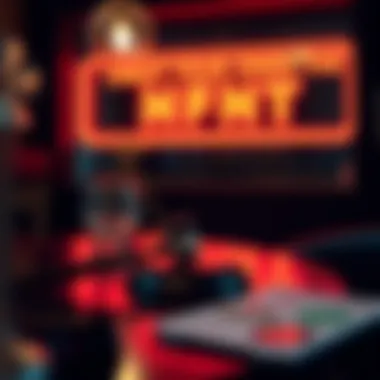

Price Fluctuations
Price fluctuations in the NFT market can be akin to riding a roller coaster. The value of NFTs isn’t static; it’s influenced by myriad factors including demand, trends, and even celebrity endorsements.
Key characteristic: Volatility. While the allure of high returns can be enticing, new creators must remain aware that the market can swing drastically overnight. This unpredictability can influence not just how you price your NFT, but also how you strategize your selling.
One unique feature to highlight is that price can sometimes be determined by more than just intrinsic value. Popularity of artists, timing of release, and broader market sentiment can all affect the perceived value of an NFT.
Collector Demand
Collector demand can shape the entire landscape for NFTs. As the niche matures, understanding what collectors are looking for becomes paramount. This nuancing of demand illustrates shifting tastes, often aligned with cultural shifts or technological advancements.
Key characteristic: Curated experiences. Collectors generally gravitate toward NFTs that offer more than just digital ownership; they want a narrative, provenance, and often social validation. Thus, creators should consider how best to convey their story when minting NFTs.
A unique aspect of collector demand lies in how it influences future prices. High demand can lead to bidding wars, significantly increasing an NFT’s market value. However, this can also backfire if a temporary craze fizzles, leaving those who bought high scrambling to recoup their investments.
In summary, pondering these considerations when creating an NFT can save you from a world of headaches down the line. Legal knowledge protects creators, awareness of environmental impact fosters sustainability, and understanding market trends prepares you for the rapid changes that characterize the NFT landscape. By navigating these areas deftly, creators can not only thrive but can also contribute positively to the burgeoning world of NFTs.
Promoting Your NFT
Creating an NFT is just the beginning; how you promote it can take it to another level. Think of promotion as the bridge between your unique creation and its potential buyers. It’s important to realize that the NFT market is saturated. Therefore, making your piece stand out is crucial to attract collectors and enthusiasts. Efficient promotion delivers visibility and helps foster engagement, allowing collectors to feel connected to your work.
Social Media Marketing
Utilizing Platforms
When it comes to promoting your NFT, social media stands as the most potent tool at your disposal. Platforms like Twitter, Instagram, and many others create an environment where artists can connect with audiences directly. The visual nature of these platforms is ideal for showcasing digital art. For instance, an artist can post sneak peeks of their NFT, share the creation process, and tell a story behind their work. These types of posts create a sense of connection, making followers invested in your journey.
A key characteristic of utilizing social media is the sheer reach it can offer. Unlike traditional advertising methods, creating a post on Instagram or a tweet on Twitter can go viral, potentially reaching thousands or even millions of users instantly. But beware, there's a double-edged sword here. The algorithm changes frequently, and without a strategy, your content might fade into the background noise. Maintaining a consistent presence and understanding the nuances of each platform can make a significant difference.
Engaging with the Community
Engaging with the community is another vital aspect of promoting your NFT. The NFT community thrives on interaction. Engaging discussions not only help in gaining visibility but also in building rapport with potential buyers. Platforms like Discord and Reddit allow you to join conversations, seek feedback, and share insights. This aspect of engaging with communities aids in creating an authentic connection—people often resonate more with artists who show genuine interest in their perspective.
Engagement also offers the benefit of loyalty. Regular interactions can transition casual observers to committed fans who may advocate for your work within their circles. However, this requires time and effort—consistency is key. It is essential to strike a balance; over-promoting can backfire, leading to disinterest or annoyance from your audience.
Collaborations and Networking
Partnering with Artists
Partnering with fellow artists can be a strategic move to broaden your scope. By collaborating, both parties can reach new audiences, merging fan bases in a way that creates additional opportunities. This synergy can inspire different artistic expressions, adding layers and depth to what each collaborator brings to the table. A unique blend of styles can enhance creativity; it's like making a new recipe with a mix of ingredients that compliment each other well.
Notably, artists who partner tend to experience increased visibility. This action not only diversifies your portfolio but also enhances your credibility by association. Yet, collaboration needs to be approached with caution; you must ensure that both artists have aligned goals and understand the creative direction clearly to avoid conflicts.
Joining NFT Groups
Perhaps one of the best decisions can be to join NFT groups dedicated to promoting and discussing various topics within the NFT realm. These groups can serve as a treasure trove of information, offering insights on market trends, tips on promotion, and general support. Additionally, connecting with fellow creators can lead to collaborative projects or even just establish valuable relationships that may become beneficial in the long run.
A key characteristic of these groups is their focused nature. You’re not only gaining knowledge but access to a community driven by similar interests. However, the downside might be information overload or cliques forming, which can make it hard to break into certain circles. Still, the right group can act as a springboard, propelling your NFT's visibility effectively.
"Engaging with communities creates not just visibility, but a network of support that is invaluable in navigating the NFT landscape."
Future of NFTs
The future of non-fungible tokens (NFTs) is marked by rapid advancements and continually evolving potential. As digital ownership becomes more crucial, NFTs are transforming various industries by providing authenticity and traceability. Their rise promises not just a shift in how we perceive ownership but also how we interact with digital assets. This makes understanding the future of NFTs significant for anyone involved in the digital economy, from artists to investors.
Technological Innovations
Smart Contracts
Smart contracts are a cornerstone technology in the NFT landscape. These self-executing contracts, written into lines of code, automatically enforce the terms of an agreement. A key characteristic of smart contracts is their decentralized nature, which allows trust between parties without the need for intermediaries. This contributes significantly to the overall integrity of NFTs, as the outcomes are driven by code that cannot be altered or tampered with.
The unique features of smart contracts include automation of transactions and conditional execution based on pre-set parameters. For instance, if an NFT is sold, the smart contract can instantly distribute royalties to the artist each time it changes hands. This innovative approach is beneficial because it ensures fairness and transparency in the transaction. However, concerns remain regarding security vulnerabilities in coding that could expose users to risks.
Cross-Platform Functionality
Cross-platform functionality has become more and more relevant as NFTs expand beyond their original frameworks. This characteristic allows NFTs to be utilized across various platforms, enhancing their accessibility and usability. For creators and collectors, being able to trade and showcase NFTs in multiple markets without restrictions increases opportunities and exposure.
A unique aspect of cross-platform functionality is its role in breaking down silos between different ecosystems, enabling seamless transactions and user experiences. This flexibility can be advantageous, as it fosters creativity among developers and artists. On the downside, the challenge lies in the standardization across platforms, which may create compatibility issues and hinder design integrity.
Potential Use Cases
Virtual Reality
Virtual reality (VR) presents a transformative use case for NFTs. With the ability to create immersive environments, NFTs can unlock a new realm of digital experiences, allowing users to own and interact with virtual property or artwork in lifelike environments. A notable characteristic of VR as an application for NFTs is the enhancement of social interactions in digital realms, such as virtual galleries or concert venues.
The unique feature of deploying NFTs in VR is the potential to attach a digital asset to a specific location within a virtual world. For example, owning an NFT can grant access to exclusive areas or events within a VR space. However, the technology is still maturing, and factors like hardware limitations and accessibility could impede widespread adoption.
Supply Chain Management
Another significant application of NFTs lies in supply chain management. By using NFTs to represent physical goods, companies can track their products' journey from production to delivery. A key characteristic of this use case is that it offers transparency and accountability at every stage of the process.
The unique benefit of utilizing NFTs in this context is the ability to provide proof of authenticity and ownership, which can help reduce fraud and improve consumer confidence. With documentation attached to an NFT, every stakeholder in the supply chain can verify a product’s history. However, challenges such as integrating existing systems and regulatory compliance remain hurdles to widespread adoption.
"The broadening potential of NFTs signifies a remarkable evolution in how we perceive and practice ownership in our increasingly digital lives."
In sum, both technological innovations and potential use cases illustrate that the future of NFTs is not only promising but also opening doors to new paradigms of interaction and ownership. Understanding these elements is essential for anyone looking to stay ahead in the ever-evolving landscape of digital assets.













